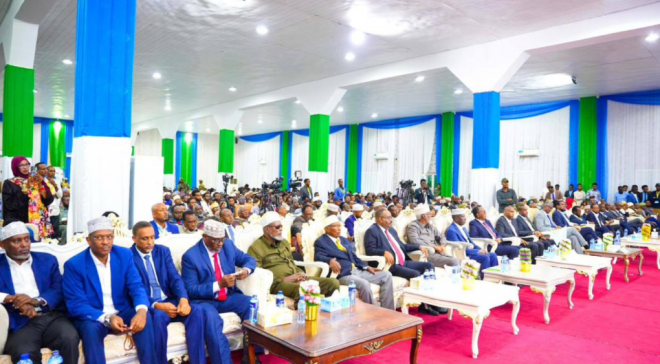Somalia is getting ready for its historic population and housing census
OPINION- On November 18th, the Somalia National Bureau of Statistics joined the continent in celebrating African Statistics Day. National Statistics is a vital component for sound policymaking, providing evidence on improving the lives of citizens, monitoring results, and reporting on development results. Without better and more accessible data, policymakers will find it challenging to address significant economic development problems at both the local and international levels.
Consequently, the demand to produce high-quality data with high frequency and timely dissemination has been robust in recent years. In tandem with the need for high quality and reliable statistics is a professional and independent statistics bureau to ensure that the best data possible is compiled and disseminated. An example is that the World Bank recommends that poverty surveys should be conducted every three years and be released within 12 months of data collection. The 2030 Agenda for Sustainable Development and Agenda 2063 for Africa recognize the central role of reliable statistics and emphasize goals, indicators, and national reporting.
Population and housing census is the most extensive data collection undertaken in a country by the government. The long history of census data collection dates from 2000–1000 BCE to ancient Egypt, Greece, and China, which enumerated people, livestock, and food items. Then came the late eighteenth century, governments of Europe and North America established statistical agencies to publish official statistics on the state of the nation and to inform public discourse. European countries began systematically conducting full-fledged population censuses, and a decennial national census became a provision of the US Constitution. By the end of the nineteenth century, half of the world’s population had been enumerated in censuses. These advances also led to some of the innovations in statistics and social science research methods that enabled the rise of the sample survey.
For the Federal Republic of Somalia, the story is different. Since its independence in 1960, it has only conducted two censuses. The first population census was in 1975 but was not published. Only an analytical report based on the census was brought out in 1984. Another population census was carried out in 1985-86, and the results were not published due to accuracy concerns. And one population estimate was done in 2014. Therefore, the last census that was done and published was in 1975, pointing towards the fact that there exists a dearth of accurate and reliable statistics.
The office of the Somalia National Bureau of Statistics is now working on filing this long forty-six-year gap of lack of vital statistics. So far, the bureau has done the Somali Labor Force Survey Report, Report on the Socio-economic Impact of Covid-19 on the Benadir Region, Somalia Health and Demographic Survey Report. It has also been disseminating economic growth data as well as consumer price index. Currently, it plans to do the Somali Integrated Household Budget Survey (2021/22), Multiple Indicator Cluster Survey (MICS), which are in preparation for the population and housing census in 2023.
The 2023 population and housing census intends to count and provide information on every person, from the newly born babies to the oldest person in the country, for both citizens and non-citizens. Further, the population and housing census will collect information on other characteristics such as health, education, housing, employment, migration, and disability, among others.
In terms of building capacity for a solid national statistical system and governance, the Somalia National Bureau of Statistics went independent away from a department at the ministry of planning to a stand-alone independent agency with an independent board of directors both approved by the cabinet appointed by the president.
Recently, the Somalia National Bureau of Statistics also signed a historic formal agreement with the Food and Agriculture Organization (FAO) of the United Nations to transfer the Food Security & Nutrition Analysis Unit (FSNAU) and the Somalia Water & Land Information Management (SWALIM) Programs from FAO to the Bureau. The transfer will happen through a three-phased approach that is expected to conclude within three years.
In conclusion, the future of a reliable national statistical system is bright and secure, looking at where we have come from. We look forward to providing the legacy of producing high-quality and timely data collaboratively with continuous improvements to build capacity and functionality over the years in tandem with globally recognized standards and methods.
Mr. Farah is the Director-General Somalia National Bureau of Statistics. snbs@nbs.gov.so
We welcome the submission of all articles for possible publication on Garoweonline.com. Garowe Online will only consider articles sent exclusively. Please email your article today office@garoweonlime.com . Opinions expressed in this article are those of the author and do not necessarily reflect the views of Garowe Online.
Copyright © 2021 Garowe Online, All rights reserved






